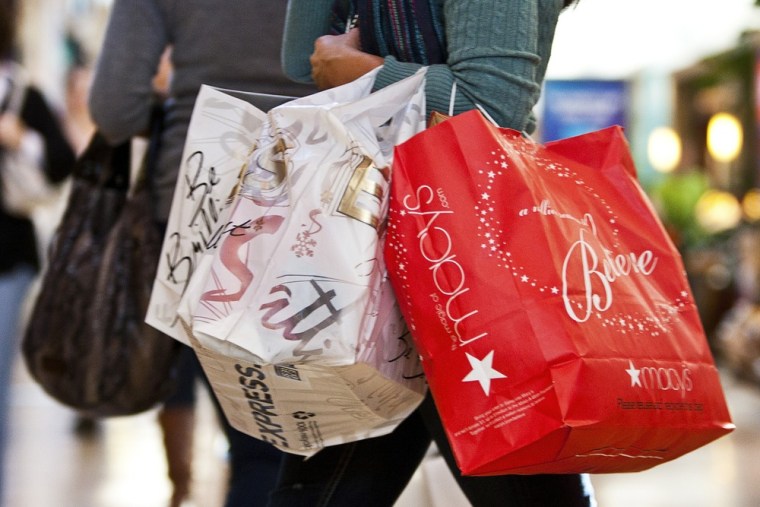The U.S. economy grew at a slower pace in the first quarter of 2012, increasing concerns about the health of the recovery. The blow was softened by a rise in consumer spending, however.
The Commerce Department, in its initial reading of how the economy fared as the new year began, reported Friday that gross domestic product expanded at an annual rate of 2.2 percent in the first three months of the year. That's down from a 3.0 percent rate in the fourth quarter and below economists' expectations of a 2.5 percent pace.
A surge in consumer spending took some of the sting from the report. Growth was still stronger than analysts' predictions early in the quarter for an expansion below 1.5 percent.
"Certainly a bit of a mixed picture, a disappointment on the headline coming in at 2.2 versus expectations of 2.5. Personal consumption was positive. But overall weaker-than-expected GDP," said Camilla Sutton, chief currency strategist at Scotia Capital.
Although the details were mixed, the GDP report offered a somewhat better picture of growth compared with the fourth quarter, when inventory building accounted for nearly two thirds of the economy's growth. In the first quarter, demand from consumers took up the slack.
Consumer spending which accounts for about 70 percent of U.S. economic activity, increased at a 2.9 percent rate - the fastest pace since the fourth quarter of 2010. That compared to a 2.1 percent rise in the fourth quarter.
There were some signs of underlying strength, with even home construction rising at its fastest pace since the second quarter of 2010, thanks to the unusually warm winter.
But business spending fell for the first time since the fourth quarter of 2009, with investment in equipment and software rising at its slowest pace since the recession ended.
Business spending fell at a 2.1 percent pace after rising 5.2 percent in the fourth quarter.
The report will probably not change views on monetary policy. Federal Reserve Chairman Ben Bernanke on Wednesday expressed comfort with the current stance of Fed policy, but held out the prospect of more bond buying if the economy deteriorated.
Americans stepped up spending on automobiles in the first quarter, with motor vehicle sales rising by the most in four years. Part of that reflected pent-up demand after last year's earthquake and tsunami in Japan disrupted supplies and left showrooms bereft of popular models.
And encouraged by a spurt in job growth, some households may have replaced older vehicles after tightening their belts during the 2007-09 recession. Motor vehicle output contributed 1.12 percentage points to first-quarter GDP growth.
But with the labor market showing early signs of fatigue after employment growth averaged 246,000 per month between December and February, consumer spending could soften in the second quarter.
Some gauges of regional factory activity eased as the second quarter started, and consumer confidence ebbed. In addition, first-time applications for unemployment benefits have spiked in recent weeks, although many economists pin the rise on seasonal quirks.
While the unseasonably warm weather helped the economy by boosting home building and renovations, it undercut demand for utilities, spending at ski resorts and sales of winter apparel.
As a result, weather was probably not the biggest contributor to growth during the quarter.
Inventories also helped GDP growth, just not as much as in the fourth quarter. Inventories increased $69.5 billion after rising $52.2 billion in the fourth quarter.
The change in inventories contributed just over half a percentage point to GDP growth compared to 1.81 percentage points in the fourth quarter.
Excluding inventories, GDP is rose at a 1.6 percent rate. In the fourth quarter, the comparable figure was just 1.1 percent.
Elsewhere, growth in the first quarter was held back by a another drop in government defense spending, which confounded expectations for a strong rebound. An increase in exports was offset by a rise imports, causing trade to have virtually no impact on growth.
Are you feeling optimistic, or not, about the economy. Let us know on Facebook.
Reuters contributed to this report.
